15 March 2018
The Louvre Museum is the world's largest art museum and a historic monument. Approximately 38,000 objects from prehistory to the 21st century are exhibited over an area of 782,910 square feet. In 2017, the Louvre was the world's most visited art museum, receiving 8.1 million visitors.
Although it's been chilly (including some snow!) and wet, we are happy to experience what seems like much less touristic crowds at this time of year. We purchased a 6-day pass for Parisian museums from our neighborhood tobacco shop and even were often able to skip long lines for ticket purchase at the museums themselves.
Although it's been chilly (including some snow!) and wet, we are happy to experience what seems like much less touristic crowds at this time of year. We purchased a 6-day pass for Parisian museums from our neighborhood tobacco shop and even were often able to skip long lines for ticket purchase at the museums themselves.
Venus de Milo in person (yeah, the white marble sculpture).
(at the left below)
The Winged Victory of Samothrace, also called the Nike of Samothrace, is a marble Hellenistic sculpture of Nike (the Greek goddess of victory), that was created about the 2nd century BC. Since 1884, it has been prominently displayed at the Louvre and is one of the most celebrated sculptures in the world. H.W. Janson described it as "the greatest masterpiece of Hellenistic sculpture", and it is one of a small number of major Hellenistic statues surviving in the original, rather than Roman copies.
The Winged Victory of Samothrace, also called the Nike of Samothrace, is a marble Hellenistic sculpture of Nike (the Greek goddess of victory), that was created about the 2nd century BC. Since 1884, it has been prominently displayed at the Louvre and is one of the most celebrated sculptures in the world. H.W. Janson described it as "the greatest masterpiece of Hellenistic sculpture", and it is one of a small number of major Hellenistic statues surviving in the original, rather than Roman copies.
The view peaking out the window from the museum.
"Mona Lisa, Mona Lisa, Men Have Named You, You're the Lady with the Mystic Smile"...(Nat King Cole)
Do you see her?
The Mona Lisa is a half-length portrait painting by the Italian Renaissance artist Leonardo da Vinci that has been described as "the best known, the most visited, the most written about, the most sung about, the most parodied work of art in the world". The Mona Lisa is also one of the most valuable paintings in the world. Mona Lisa holds the Guinness World Record for the highest known insurance valuation in history at $100 million in 1962, which is worth nearly $800 million in 2017.
The crowd here is crazy mesmerized, and so also appears Gerri.
Well that was a memorable experience, and now onto more serene viewing...
(peaking through a window again)
How did they get this lift into the courtyard - it's completely surrounded by similar structure on all sides?!
How did they get this lift into the courtyard - it's completely surrounded by similar structure on all sides?!
More masterpieces - on the left below a Michelangelo sculpture - nobody did it better.
Leaving the Louvre - that was some one-of-a-kind art - such an understatement.
The Conciergerie - (Rick Steves) a gloomy prison famous as the last stop for 2,780 victims of the guillotine during the Reign of Terror of the Revolution (1793-94). At the left below, outside the last quarters for Marie-Antoinette.
(below)
The Sainte-Chapelle is a royal chapel in the Gothic style, within the medieval Palais de la Cité, the residence of the Kings of France until the 14th century. Rick Steves: "this triumph of Gothic church architecture is a cathedral of glass like no other."
(Wikipedia)
Begun some time after 1238 and consecrated on 26 April 1248, the Sainte-Chapelle is considered among the highest achievements of the Rayonnant period of Gothic architecture. It was commissioned by King Louis IX of France to house his collection of Passion relics, including Christ's Crown of Thorns—one of the most important relics in medieval Christendom.
Along with the Conciergerie, the Sainte-Chapelle is one of the earliest surviving buildings of the Capetian royal palace on the Île de la Cité. Although damaged during the French Revolution, and restored in the 19th century, it has one of the most extensive 13th-century stained glass collections anywhere in the world.
This church is tucked away within other buildings - see it below reaching up with the high dark spire.
An early metro (subway) entry - preserved from the past.
Back to the square in front of Notre Dame - under the square, an archaeological dig of Roman ruins. It was interesting to check out for about 20-25 minutes, but we've been jaded on Italian Roman ruins.
Winding down a long day - chowing down on mussels and dessert crepe.
Taking in some nighttime sights on the way back to the apartment.













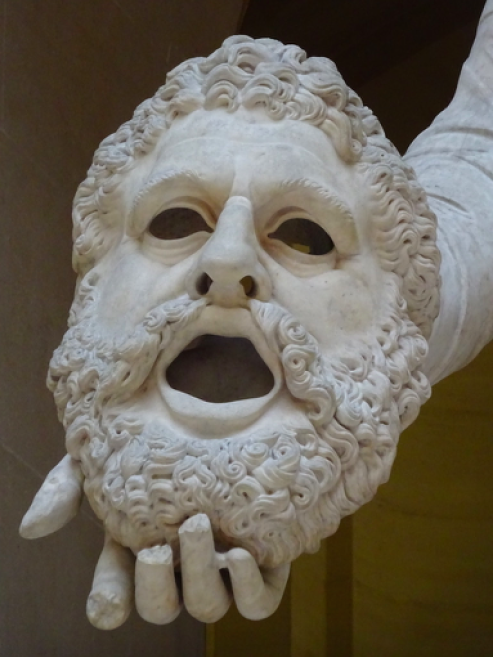





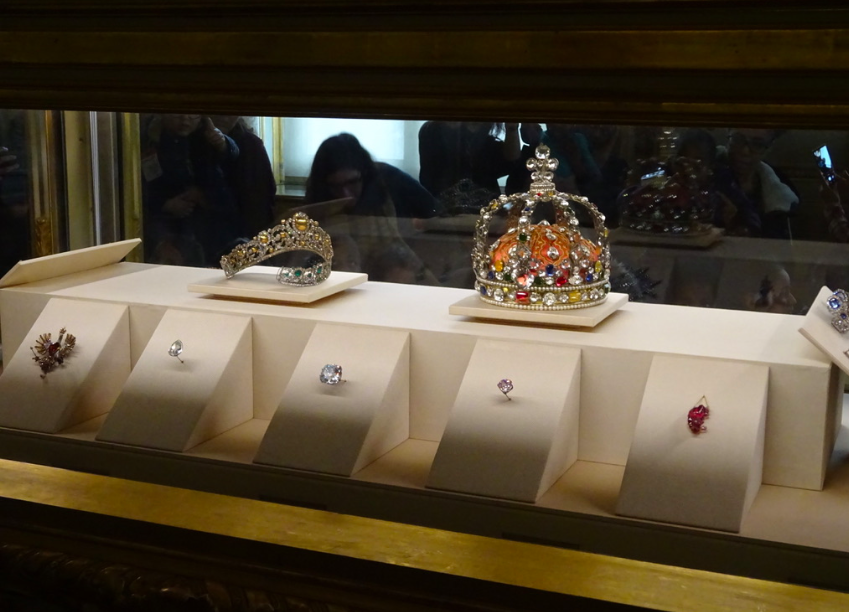
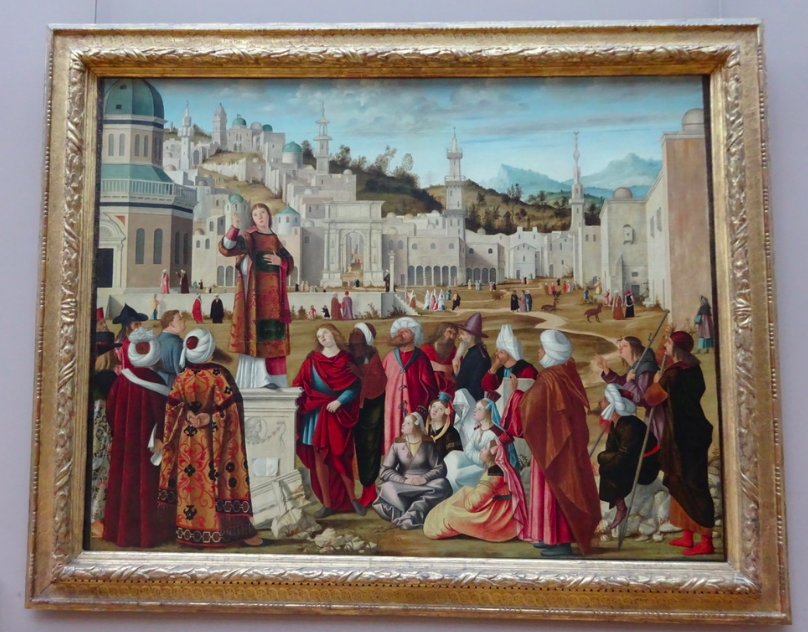





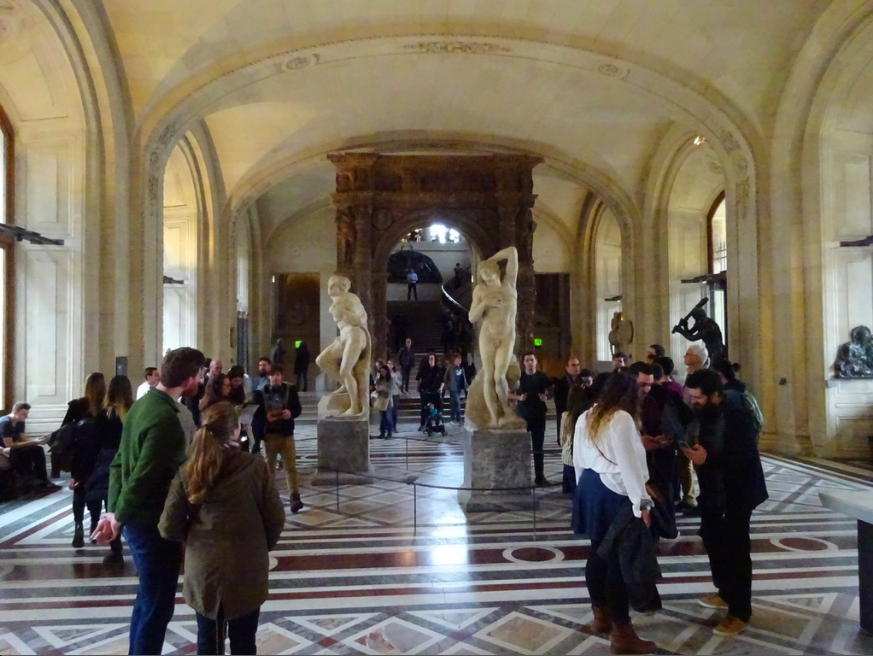


















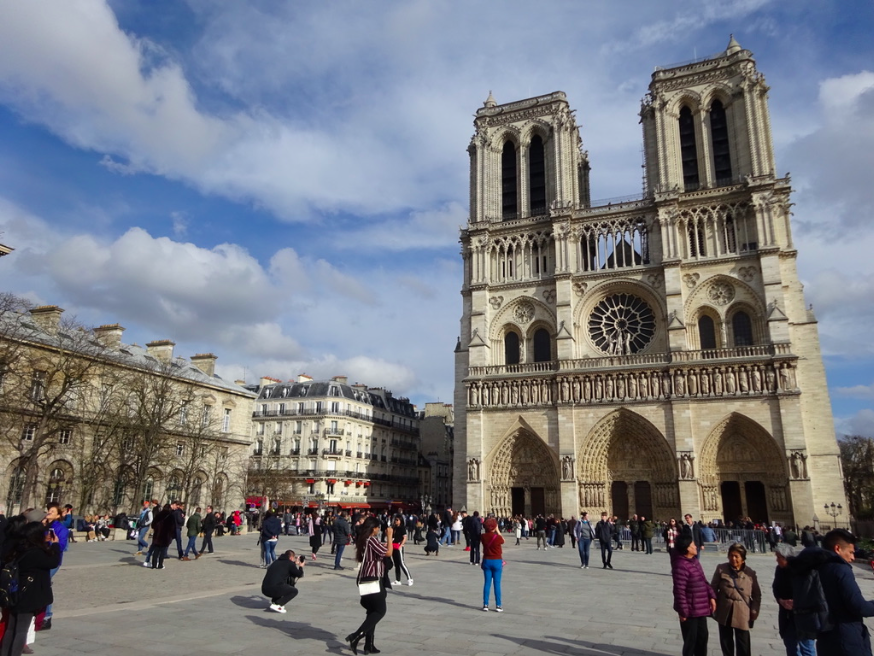





 RSS Feed
RSS Feed
